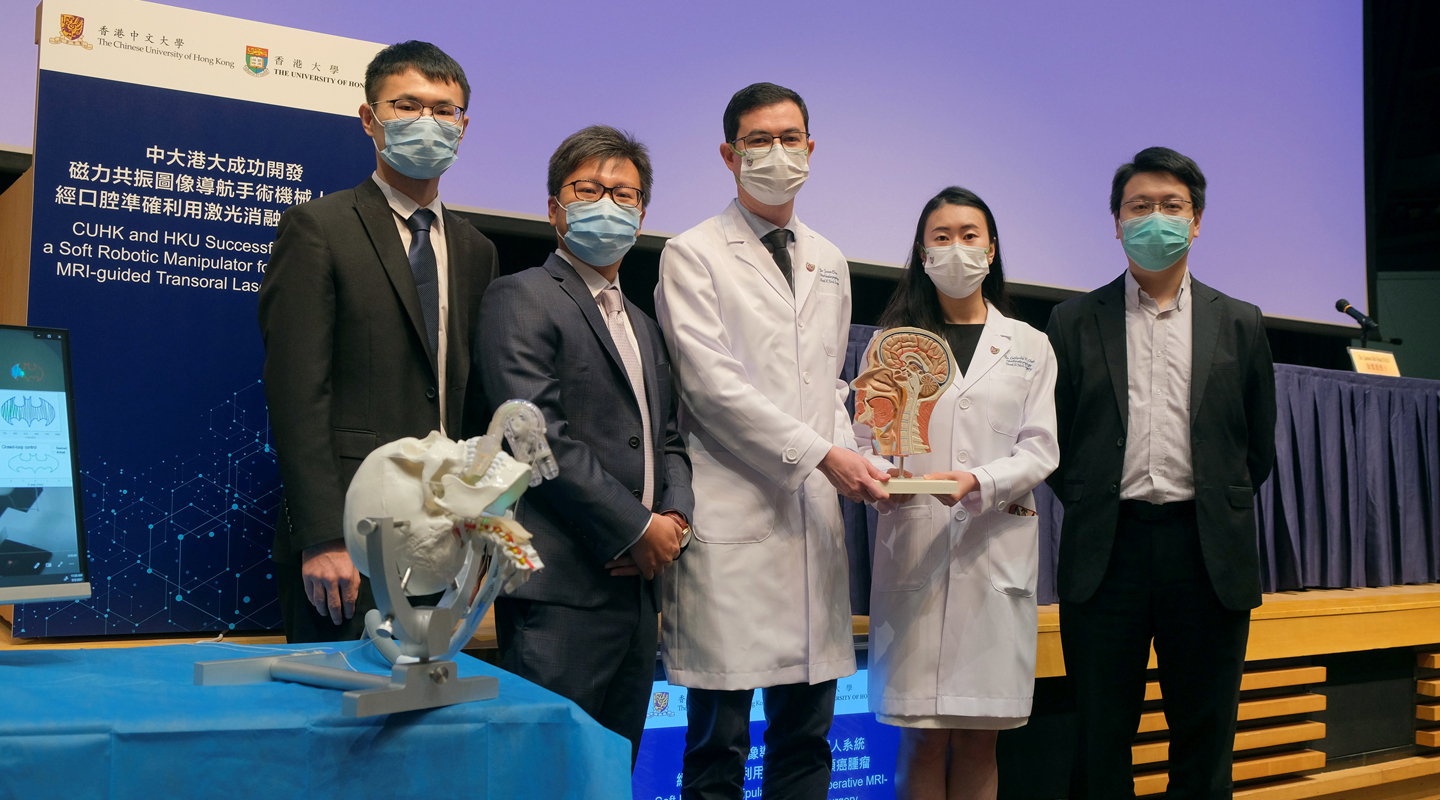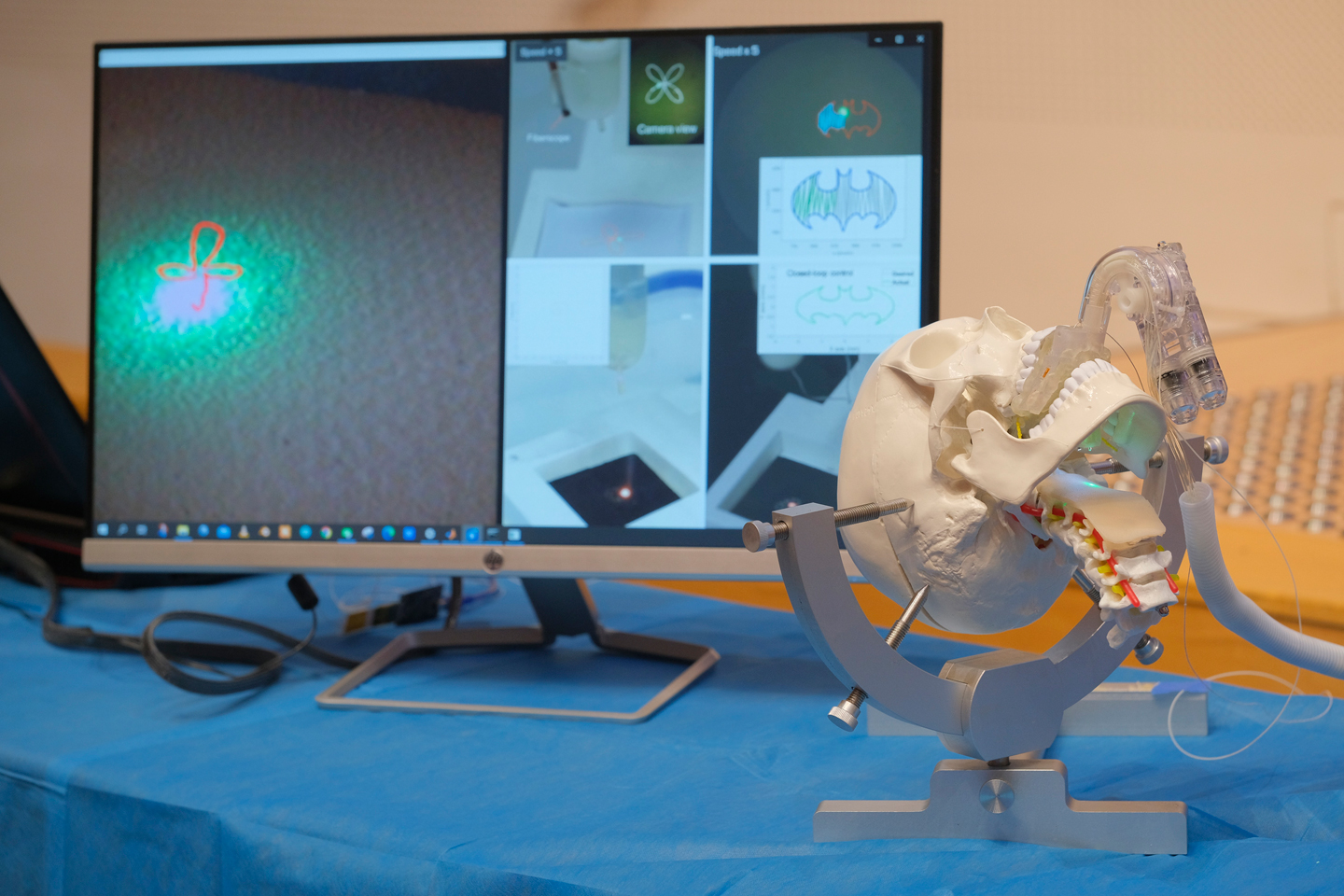Dear readers, With the launch of e-newsletter CUHK in Focus, CUHKUPDates has retired and this site will no longer be updated. To stay abreast of the University’s latest news, please go to https://focus.cuhk.edu.hk. Thank you.
Stay Put, Let Bot Do the Job
Soft robot dissolves head and neck cancer under live MRI

Treating head and neck cancer at times gives physicians a headache, as navigating the complex anatomy of these vital body parts to wipe out the tumour can be a tall order. A research team comprised of doctors and engineers from CUHK and The University of Hong Kong has designed a soft robot that works well with powerful, three-dimensional magnetic resonance imaging, aka MRI. Equipped with a laser fibre, the tiny bot enters through the mouth via endoscopy to aim lasers at cancer cells.
Head and neck cancer stands for cancers in throat, oral and nasal cavities. It is the seventh commonest cancer in the world, causing 450,000 deaths every year. Laser therapy is a common treatment, yet it remains challenging at times for throat cancer, in which patients have to take extreme positions like retracting the tongue, opening the mouth or extending the neck to ensure the tumour’s adequate exposure to laser. For patients with small jaws or large tongues, cutting into the body would be the only option, the damage inevitably being greater and recovery slowing down.
In recent years, MRI guidance has come to the aid of laser therapy, as its 3D imaging helps surgeons reckon in real time what’s going on inside the body. By showing the heat distribution in tissue during surgery, the technology ensures that the tumour is essentially removed while protecting critical tissues. For operations as nuanced as head and neck surgery, however, the MRI bore proves too confining and uncongenial an environment to work in. While bots are by no means new in microsurgery, they are mostly metallic and cannot apply under strong magnetic field. Commonly used with endoscope, the robots are too large and stiff to penetrate the tortuous throat pathways. The use of them may leave tumour removal and, more dreadedly, cancer recurrence to chance.

To navigate this fraught picture, the team contrived a soft robot that, for the first time, goes well with MRI. With the patient donning a tailor-made dental anchorage, the hydraulically actuated bot carries with it a laser fibre to arrive at the tumour by means of an endoscope, dissolving cancerous tissues with strong beams. Guided by live MRI, the bot follows closely the path laid down by the surgeon, the error being less than 200 micrometre or 0.2 mm. While surgeons taking up the scalpel may find 3D imaging helpful, heat imaging would show heat diffusion in tissue and help clinicians old and new pull off the resection with confidence and prudence.
Yielding positive results in ex vivo and cadaveric trials, the robot will grace the operating theatre in five to 10 years. The team is looking to reduce the size of the bot to access nose and sinuses. The image feed to the robot will also be sped up to help it promptly modify its game.